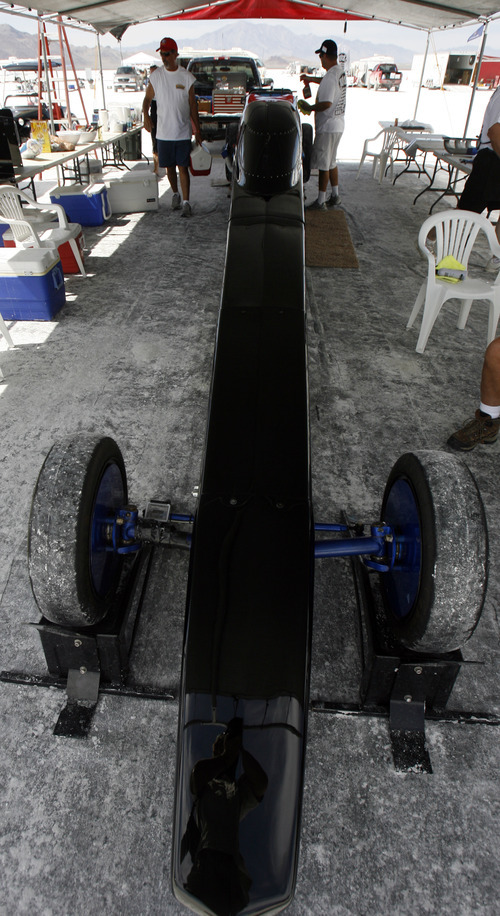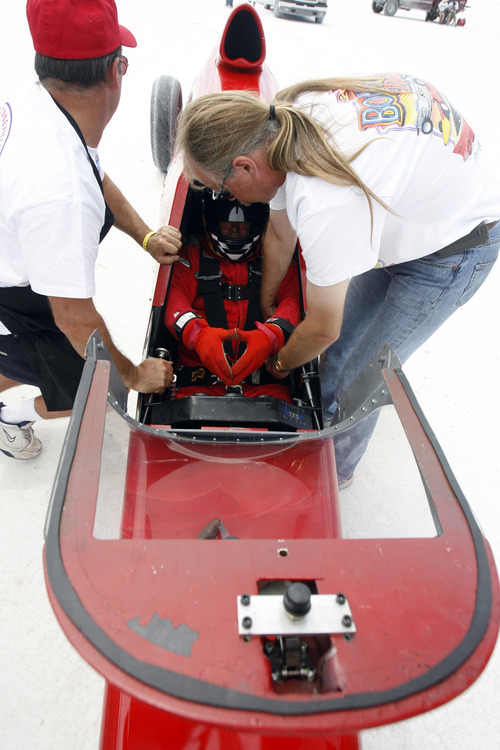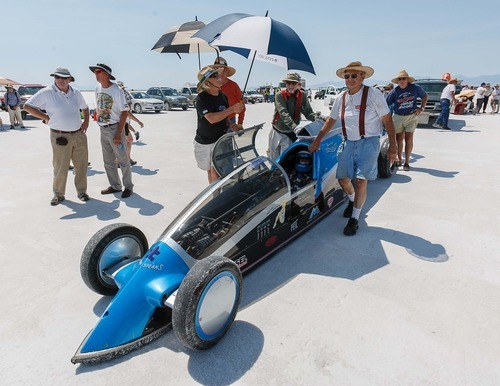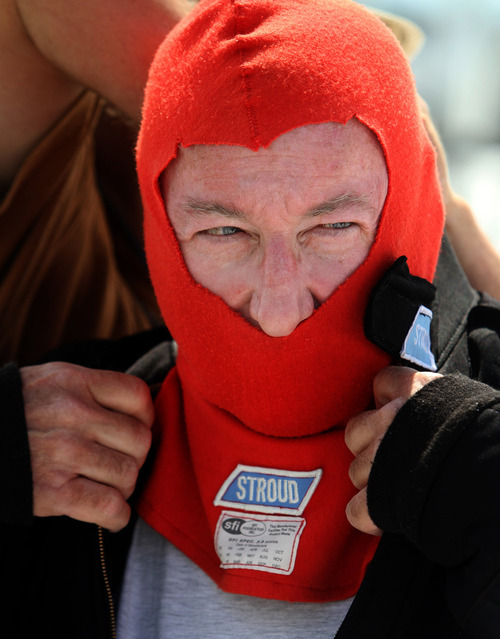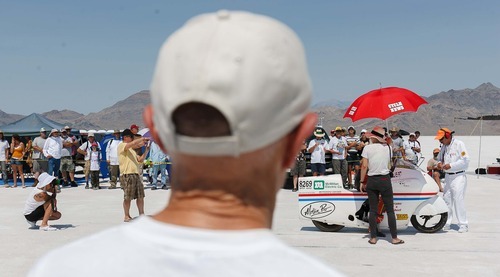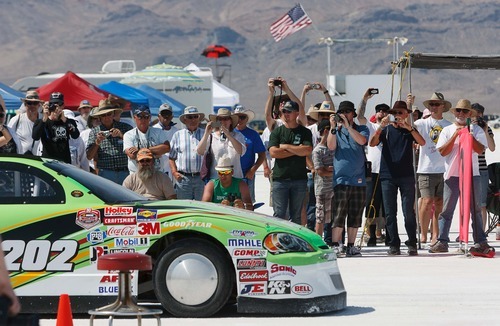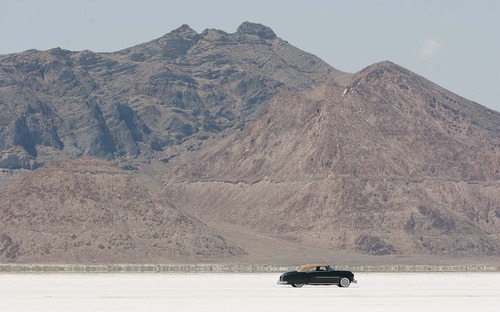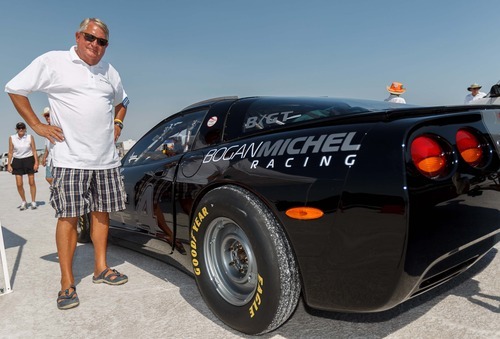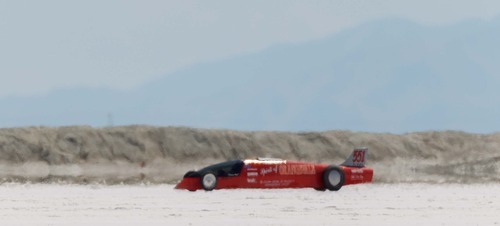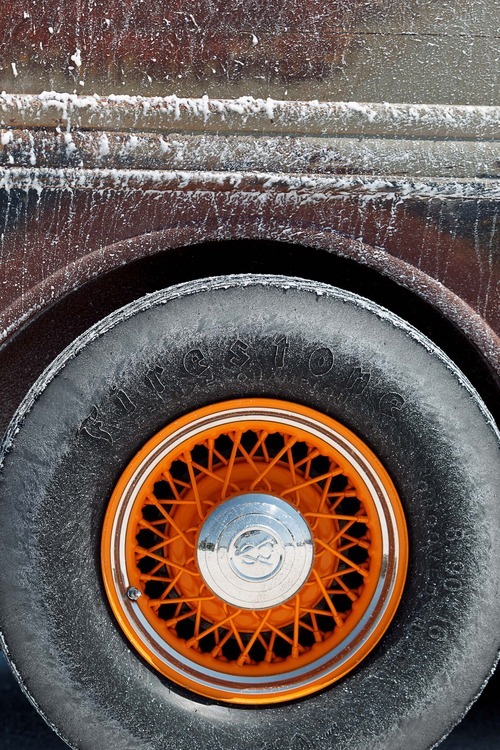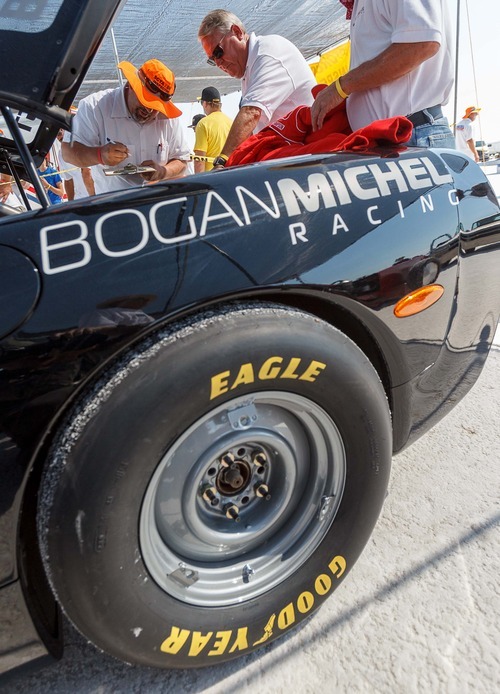This is an archived article that was published on sltrib.com in 2012, and information in the article may be outdated. It is provided only for personal research purposes and may not be reprinted.
Bonneville Salt Flats • The bizarre becomes normal this time of year when every wheeled vehicle humans can imagine seems to converge on this 30,000-acre expanse of white salt crust between the Great Salt Lake and the Utah-Nevada border.
On a recent day on the salt, I saw a guy in a two-seat roadster drive past with a stuffed bear sitting in the passenger seat. Another woman pedaled a bicycle that looked like nothing I had ever seen, unless the go-karts we used to make as kids count for something. Under colorful tents serving as garages, mechanics poured over vehicles in all shapes and sizes trying to either repair a defect or beg just a little more speed out of them.
A film crew from the Speed Channel filmed a guy dressed like Rollie Free, a motorcyclist who was the first to take a two-wheeled vehicle over 150 mph in 1948. The thing that made it cool was the rider was on Free's original bike.
"LandSpeed Louise" Ann Noeth, Bonneville's unofficial historian, told Free's story with passion. After driving three days by herself to document another Speed Week, the author of Bonneville: The Fastest Place on Earth could barely contain her enthusiasm and emotion.
Racers have been coming to this place since 1914, when Teddy Tetzlaff set the unofficial piston record of the time at 141.73 mph.
Sir Malcolm Campbell came in 1935 to set a land-speed record. Utah driver Ab Jenkins helped make the place famous by setting 24-hour endurance records in the '30s and '40s in the famed Mormon Meteor. Burt Munroe came from New Zealand in 1967 to establish a motorcycle record of 183.586 mph, made even more famous by the Anthony Hopkins movie "The World's Fastest Indian."
Then there were the jet and rocket cars of the 1960s and early '70s, when Craig Breedlove's Spirit of America and Gary Gabelich's Blue Flame each went over 600 mph on the salt. And Utah's own Don Vesco claimed the turbine speed record of 458.440 mph in 2001.
"This is the place where you can make your dreams come true with your own hand and make your own nightmares," said Noeth as we sat in my truck on the salt. "Sometimes the salt makes a decision. Sometimes you make that decision."
She said Bonneville represents the last vestige of America's Wild West.
"There is honor to take your idea, manifest it in some form of metal and rubber, make it safe and earn the right to the starting line to see if the idea holds merit," said Noeth. "And you have to be willing to do it in front everyone."
Part of the draw is that, unlike most things in modern sports, those who come to Bonneville are not motivated by money. The only thing they are competing for is a trophy and a place in the record book.
Landspeed Louise and others worry, though, that the days of the Salt Flats hosting some of the fastest cars on Earth each late summer and early fall might be numbered. The big jet and rocket cars can't attempt records here any longer due to deteriorating salt conditions. She worries that it won't be long before the big cars capable of going over 400 mph can no longer safely run here.
The Bureau of Land Management is in charge of the Salt Flats, a place the federal agency calls an Area of Critical Environmental Concern and Special Recreation Management Area. Noeth said the agency has not worked closely enough with mining operations in the area that are not replacing the salt as quickly as it is being removed.
"If the BLM does not get the restoration going, there won't be high-speed cars in the next five years," she said, tearing up. "The safety margin is eroding daily. I find it incredulous that if this type of degradation was going on elsewhere, there would be holy hell going on. It's like spray painting Mount Rushmore or emptying nitrates into the Grand Canyon. There is nary a whimper about this national site. I would like to see the people who are unborn have a chance to race here. I am worried about them."
For now, the racing continues through early October, with the strange site of salt flats formed at the end of the last Ice Age mixing with some of the fastest vehicles concocted by humans to make one of the most colorful sights in all of sports.
Twitter: @tribtomwharton


